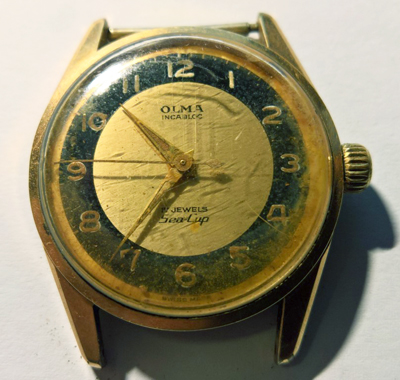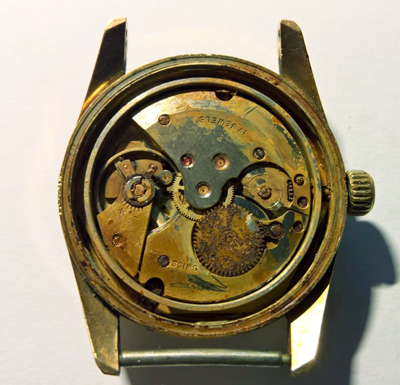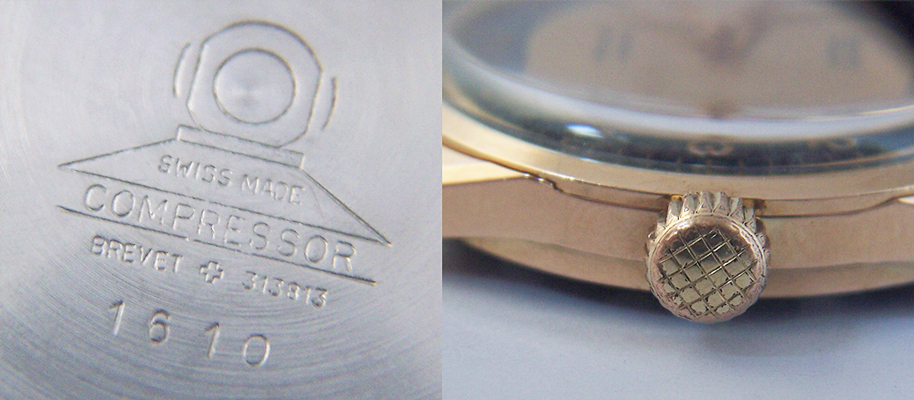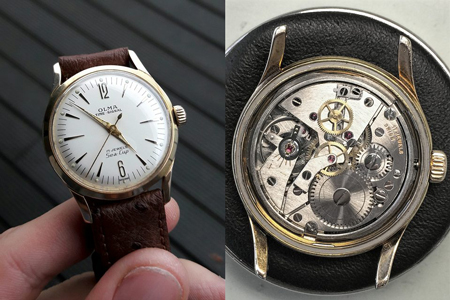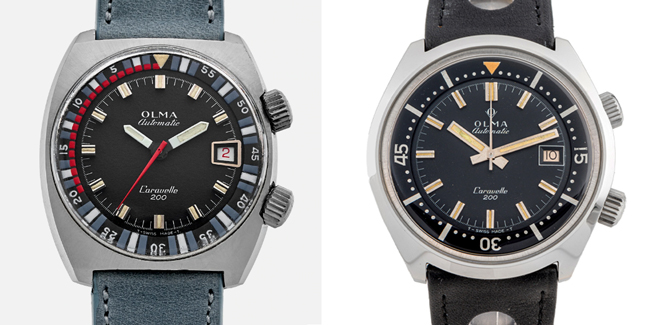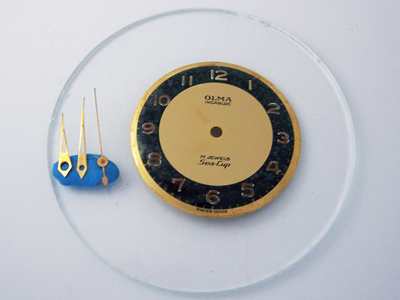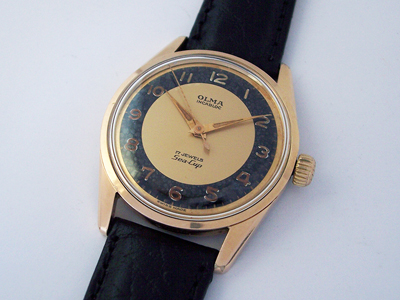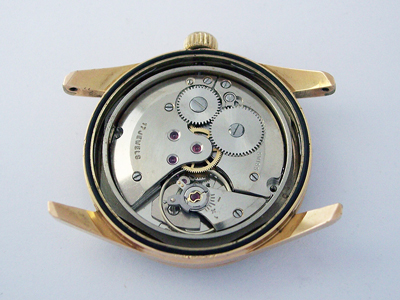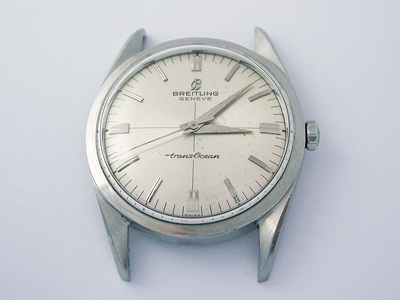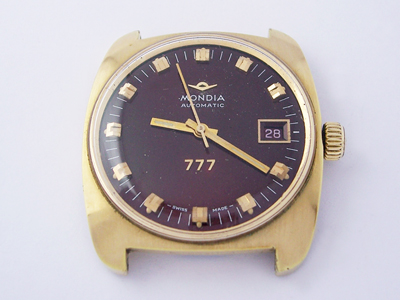I was contacted by a fellow watch enthusiast to see if I could do anything to save this Olma Sea-Cup, and I’ll admit that my first thought was… “Oooof! Nope.”
(Click pictures to enlarge)
In the movement pictures things certainly didn’t improve, with the whole case being full of rust residue and the screw heads for some parts now being unrecognisable. Yikes!
The success or failure of these kind of restoration projects hangs mainly on the amount of damage done to the dial and hands. Moisture takes no prisoners with regards to the lacquer, lume and paint on a dial, or the thin plating on the hands. Although I had reservations, I agreed to take a closer look.
I’ll admit too that I was completely unaware of the Olma brand at the time as it’s not a brand that is very popular with watch collectors. There is however more to the brand than meets the eye, with a few hidden gems to be found in their back catalogue.
Olma was created as a sub-brand of the company Numa Jeannin & Co Ltd (another brand I was unaware of) in 1906. Founded in Fleurier, Switzerland in 1894, Numa Jeannin produced high quality watches aimed at the upper end of the market, whilst their Olma sub-brand focussed more on the commercial sector. The first Olma pocket watches appeared in 1908, and the company produced mainly dress watches for the first half of the 20th century.
The watch in this post is from their Sea-Cup range, which was first introduced in 1952. Although it retains the dress watch appearance, the major selling point for the range was that they were housed in fully waterproof, Ervin Piquerez S.A (EPSA) Compressor cases, recognisable by their trademark logo and hatched crown.
The Sea-Cup models were produced throughout the 1950’s and 60’s in a number of variants, one of the most interesting models featured a Chezard Cal. 7400 ‘Seconde Morte’ (Dead Second) movement – a calibre that ticks like a quartz watch, despite being fully mechanical.
Olma had a long relationship with EPSA, producing watches in their Compressor and Super Compressor cases from the 1950’s through to the mid 1970’s. A couple of notable models being these two twin-crown diver’s watches from their Caravelle 200 line with rotating inner bezels.
So back to the subject of this post, which definitely needed some help. The dial in this watch has a ‘bullseye’ design which was popular from the 1940’s to the 1960’s, but is rarely seen on a modern watch. Although it looked terrible when first uncased, after careful cleaning, I found that the dial had survived its ordeal better than I expected, and the hands too cleaned up pretty well.
The lume had obviously suffered throughout (the lume in the hands fell out as soon as they were touched), but rather than remove and replace it all, the hands were lumed and artificially aged to better match the numerals on the dial.
With this level of corrosion, restoring an original movement is not really an option as the amount of effort and/or parts needed, make the whole venture commercially unviable, so the best option is to try and replace the entire movement with a suitable donor. (The original movement was so badly rusted that I had to snap the winding crown, just to get it out of the case!)
Numa Jeannin didn’t produce in-house movements for their Olma watches, instead fitting ebauches from well-regarded Swiss manufacturers, in this case the A. Schild Cal. 1702/03; a mid-level, 17 Jewel manual Swiss movement, with a beat rate of 18,000 bph.
The A. Schild 17xx calibres were widely used throughout the 1960’s and 70’s, so I assumed that finding a suitable replacement would be quite easy. However, it proved harder than I thought as many of the 1702/03 calibres were 21 rather than 17 jewel, had a date complication, or had a branded train bridge. After a few weeks of searching I finally found a donor movement in good condition, which was subsequently fully serviced, ready to be put back into service.
With case thoroughly cleaned, a new winding stem, crystal and caseback gasket fitted, the watch could finally be re-assembled.
To finish the Olma story, although there is very little information about exactly when they ceased trading, it’s likely that they were yet another victim of the quartz revolution. They don’t appear to have produced any watches since the 1980’s, but the company was only declared bankrupt in 1997, and finally de-listed in 1999.
The Olma name was subsequently bought in 2009 by the ShangHaiXin Yu Watch & Clock Group, China in 2009 who appear to have revived the brand (see design case study here), though whether it actually re-launched in China is unclear.
Rich.
** Many thanks to Stefano Thermes for letting me feature his watch on the blog. **

